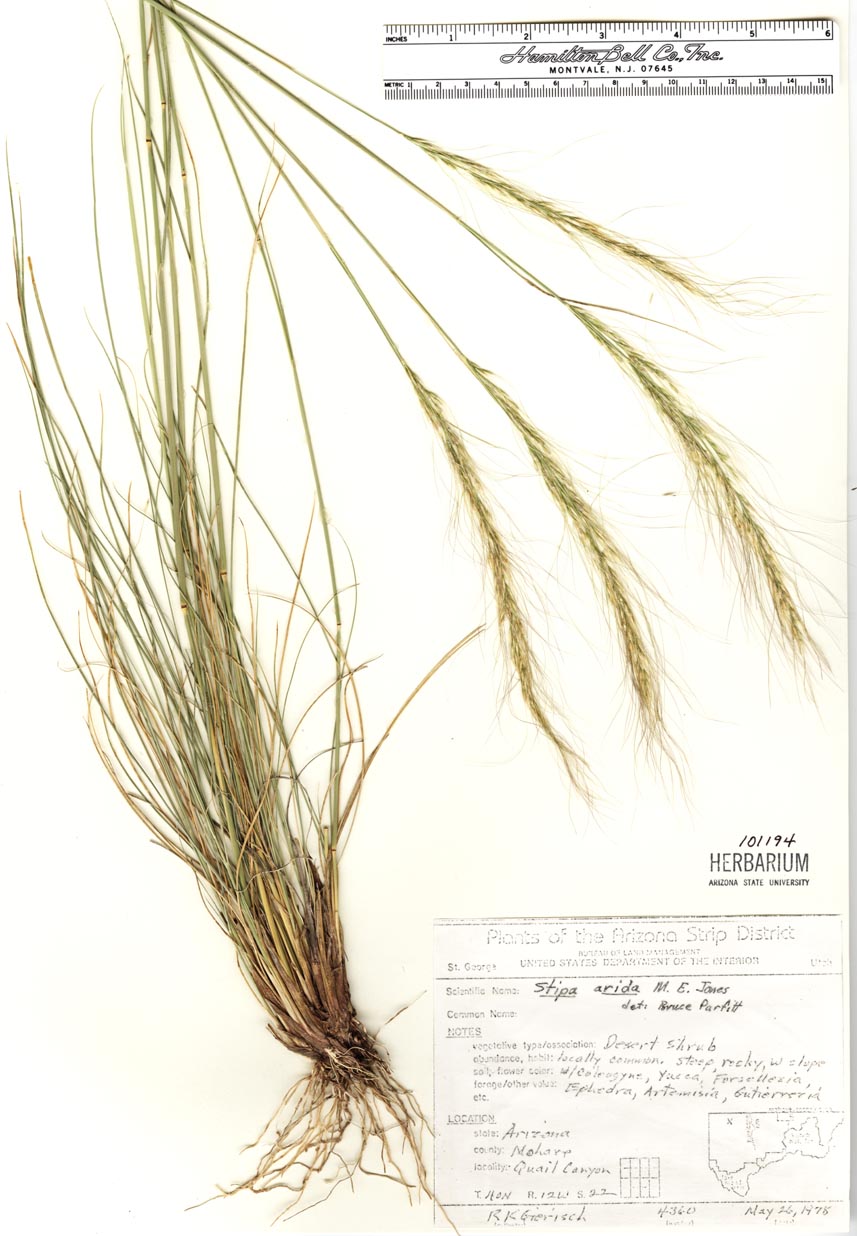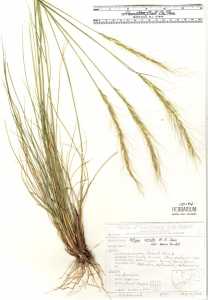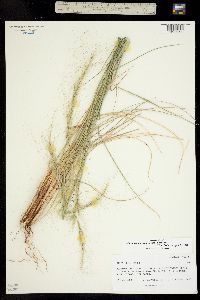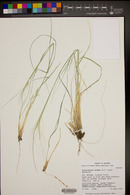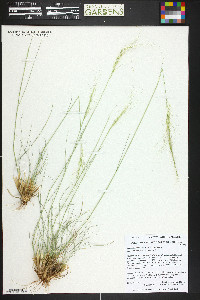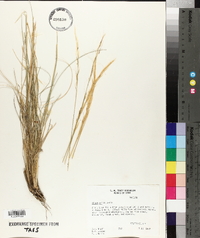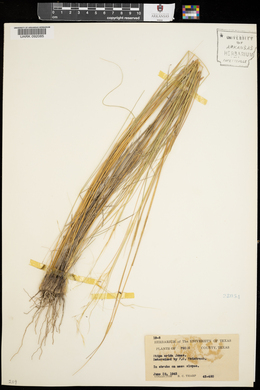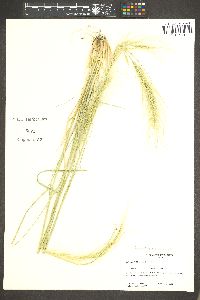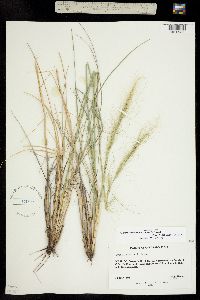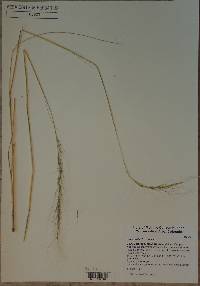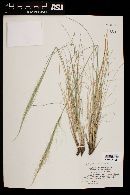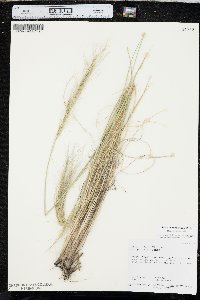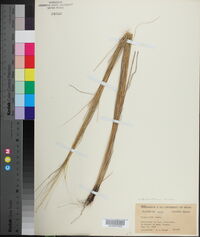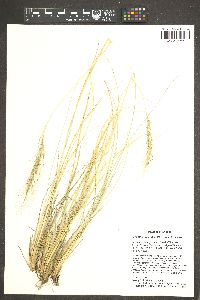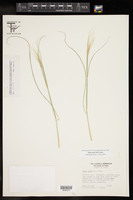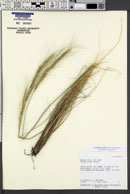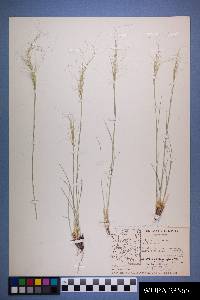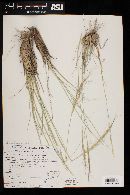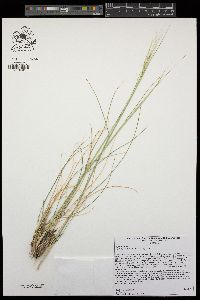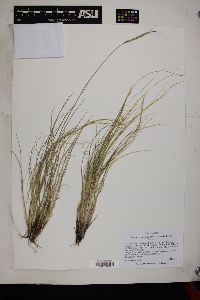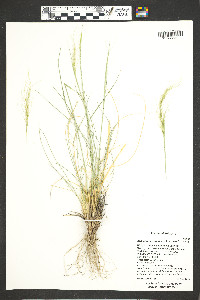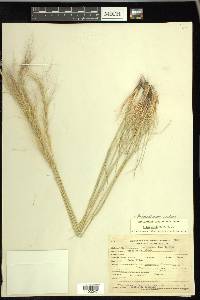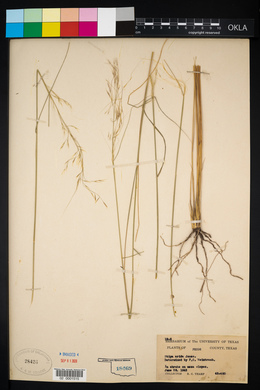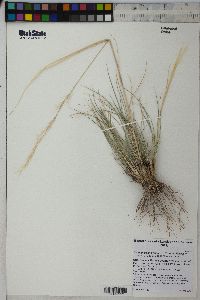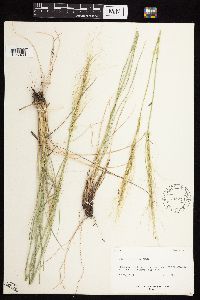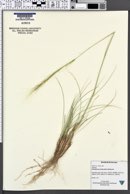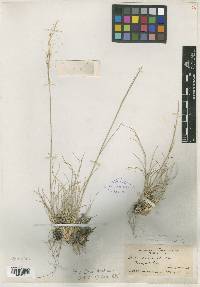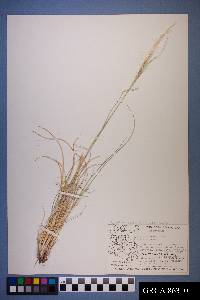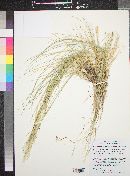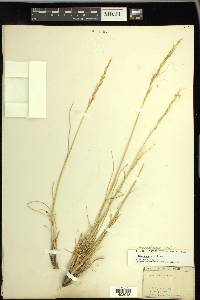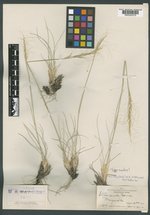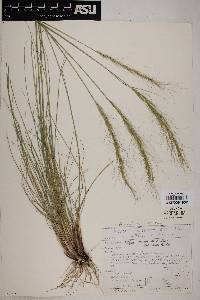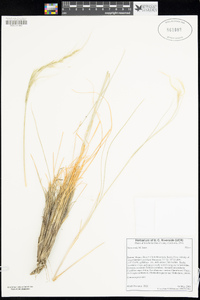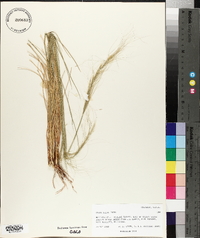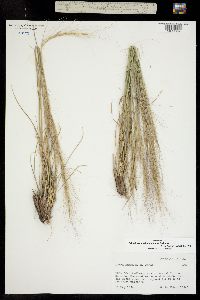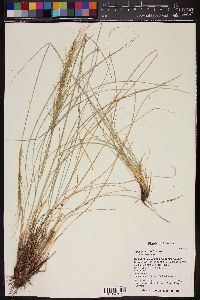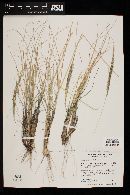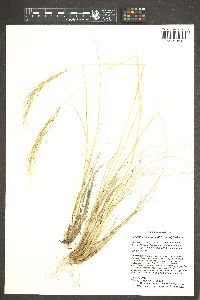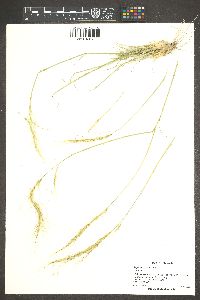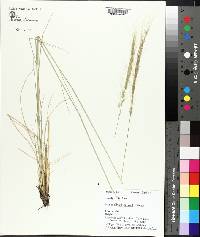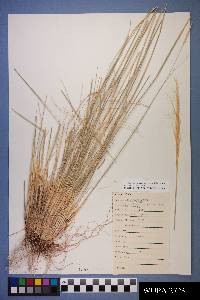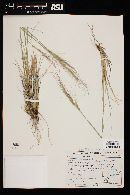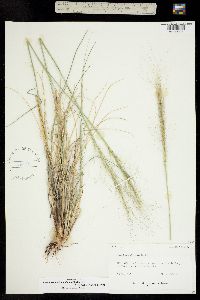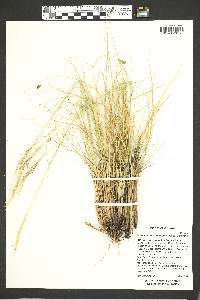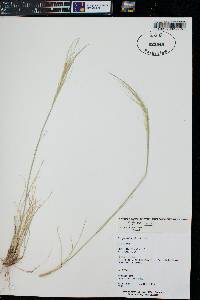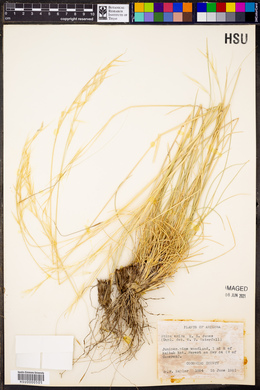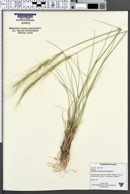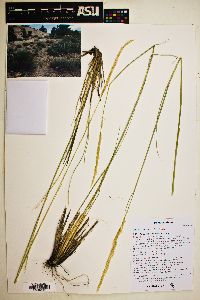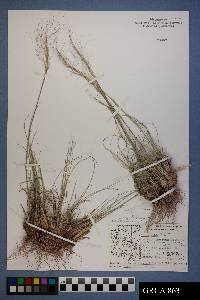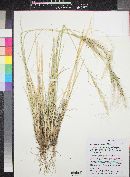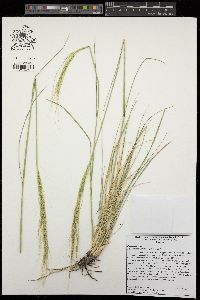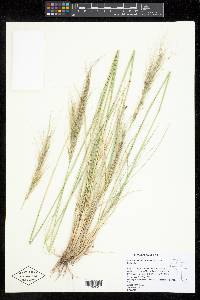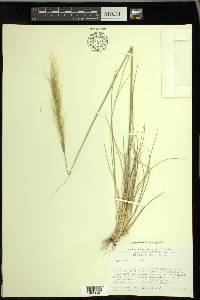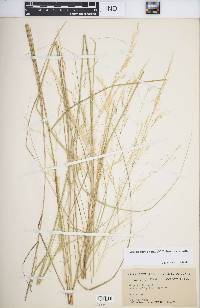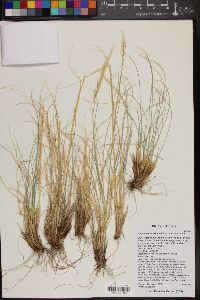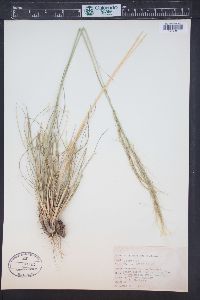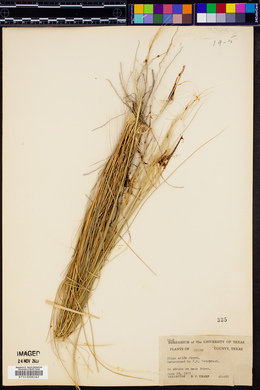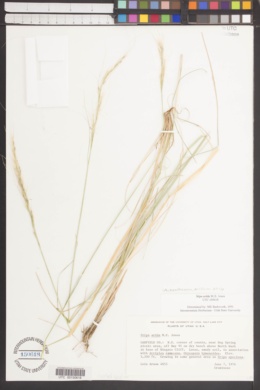
|
|
|
|
Family: Poaceae
Mormon needlegrass, more...Mormon Rice Grass, arid needlegrass
[Achnatherum aridum (M.E. Jones) Barkworth, moreStipa arida M.E. Jones] |
Plants cespitose, not rhizom-atous. Culms 35-85 cm tall, 0.9-2.5 mm thick, usually glabrous and smooth, some-times scabridulous or puber-ulent; nodes 2-3. Basal sheaths glabrous, upper sheath margins hyaline distally; collars of th. Basal sheaths occasionally with a small tuft of 0.8 mm hair on the sides, collars of the upper leaves glabrous, scabridulous, or sparsely puberulent; ligules 0.2-1.5 mm, truncate to rounded, erose, sometimes ciliate, cilia about 0.05 mm; blades 0.9-3 mm wide, abaxial surfaces smooth or scabridulous, glabrous, adaxial surfaces hirtellous, hairs to 0.5 mm. Panicles 5-17 cm long, 1-1.5 cm wide, contracted, bases often enclosed at anthesis; branches appressed or strongly ascending, straight, lower branches 1.5-4 cm. Lower glumes 8-15 mm long, 0.6-0.8 mm wide; upper glumes 1-5 mm shorter; florets 4-6.5 mm long, 0.6-1.1 mm thick, fusiform, terete; calluses 0.2-1 mm, sharp; lemmas evenly hairy on the lower portion, hairs 0.2-0.5 mm, the distal 1/5-1/4 often glabrous, apical hairs absent or fewer than 5, to 1.5 mm; awns 40-80 mm, persistent, obscurely once-geniculate, scabridulous, terminal segment flexuous; paleas 2-3.2 mm, 1/2-3/4 as long as the lemmas, pubescent, hairs exceeding the apices, apices rounded, flat; anthers 2-3.5 mm, dehiscent, not penicillate. 2n = unknown. Achnatherum aridum grows on rocky outcrops, in shrub-steppe and pinyon-juniper associations, from southeastern California to Colorado and New Mexico, at 1200-2000 m. It has also been reported from Texas, but no specimens documenting these reports have been located. It has not been found in Mexico. Dr. David Bogler, USDA NRCS PLANTS Database Perennials, Terrestrial, not aquatic, Stems nodes swollen or brittle, Stems erect or ascending, Stems caespitose, tufted, or clustered, Stems terete, round in cross section, or polygonal, Stem internodes hollow, Stems with inflorescence less than 1 m tall, Stems, culms, or scapes exceeding basal leaves, Leaves mostly basal, below middle of stem, Leaves mostly cauline, Leaves conspicuously 2-ranked, distichous, Leaves sheathing at base, Leaf sheath mostly open, or loose, Leaf sheath smooth, glabrous, Leaf sheath and blade differentiated, Leaf blades linear, Leaf blades very narrow or filiform, less than 2 mm wide, Leaf blades mostly flat, Leaf blade margins folded, involute, or conduplicate, Leaf blades mostly glabrous, Leaf blades scabrous, roughened, or wrinkled, Ligule present, Ligule an unfringed eciliate membrane, Inflorescence terminal, Inflorescence a contracted panicle, narrowly paniculate, branches appressed or ascending, Inflorescence solitary, with 1 spike, fascicle, glomerule, head, or cluster per stem or culm, Flowers bisexual, Spikelets pedicellate, Spikelets dorsally compressed or terete, Spikelet less than 3 mm wide, Spikelets with 1 fertile floret, Spikelets solitary at rachis nodes, Spikelets all alike and fertille, Spikelets bisexual, Spikelets disarticulating above the glumes, glumes persistent, Spikelets disarticulating beneath or between the florets, Rachilla or pedicel glabrous, Glumes present, empty bracts, Glumes 2 clearly present, Glumes equal or subequal, Glumes equal to or longer than adjacent lemma, Glumes 3 nerved, Lemma 5-7 nerved, Lemma body or surface hairy, Lemma apex acute or acuminate, Lemma distinctly awned, more than 2-3 mm, Lemma with 1 awn, Lemma awn 2-4 cm long or longer, Lemma awned from tip, Lemma awn twisted, spirally coiled at base, like a corkscrew, Lemma awn twice geniculate, bent twice, Lemma margins inrolled, tightly covering palea and caryopsis , Lemma straight, Callus or base of lemma evidently hairy, Callus hairs shorter than lemma, Palea present, well developed, Palea membranous, hyaline, Palea shorter than lemma, Stamens 3, Styles 2-fid, deeply 2-branched, Stigmas 2, Fruit - caryopsis, Caryopsis ellipsoid, longitudinally grooved, hilum long-linear.
Common Name: Mormon needlegrass Duration: Perennial Nativity: Native Lifeform: Graminoid Synonyms: Stipa arida, Stipa mormonum |

